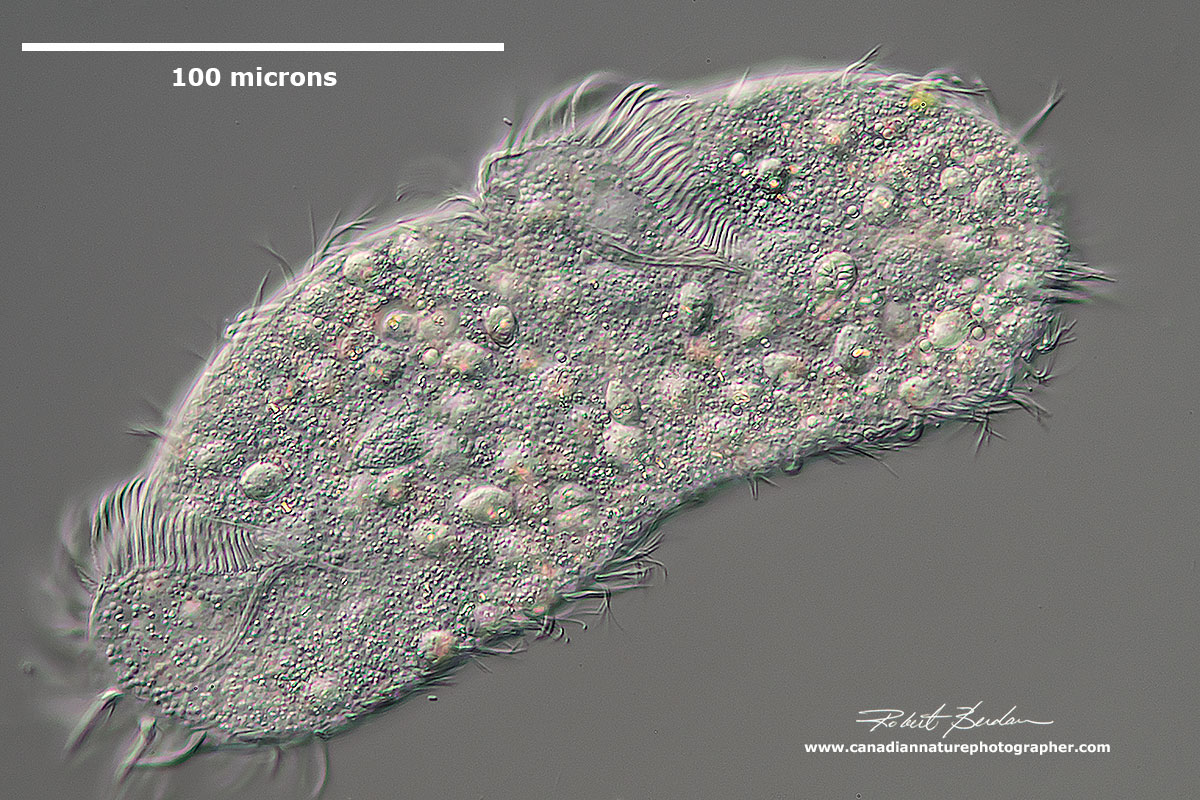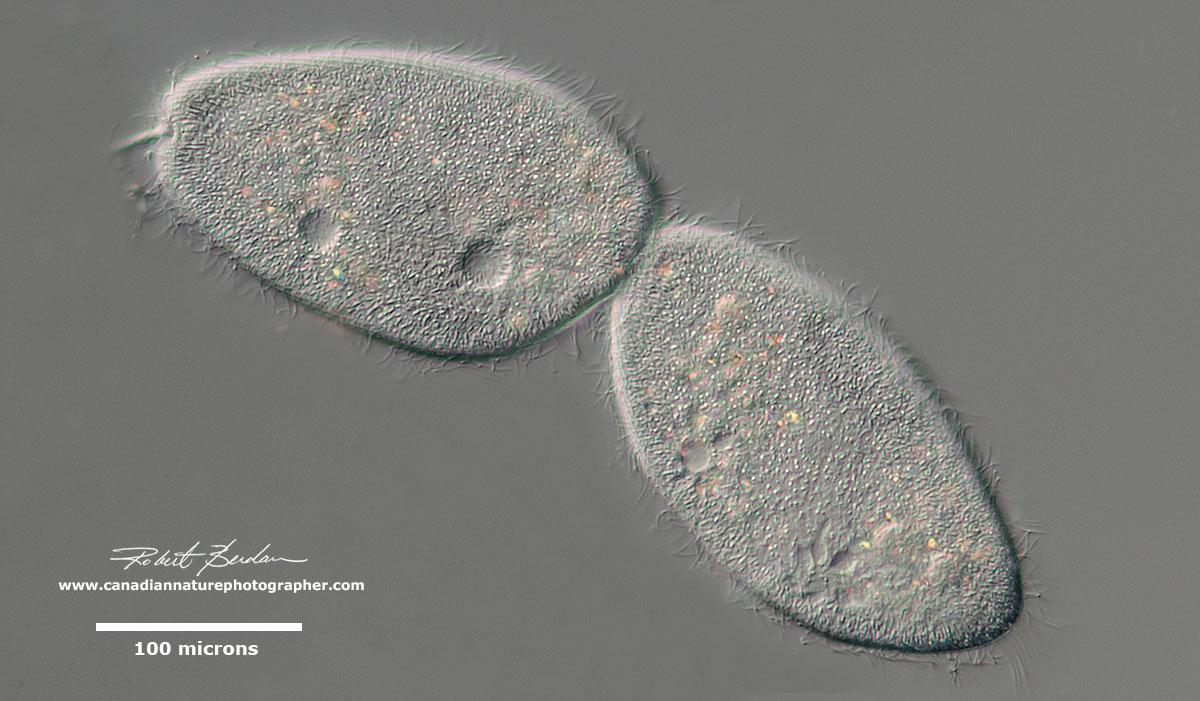
Ciliate 400x in 2020
To determine the handedness of helical swimming of ciliate Tetrahymena in free-space (Supplementary Movie 1), 3D swimming trajectories of Tetrahymena cells were tracked using a tPOT microscope.

Ciliates under the microscope YouTube
[In this video] A video collection of several common ciliates under the microscope. Larger eukaryotes, such as animals, have cilia as well. Cilia are usually present on a cell's surface in large numbers and beat in coordinated waves. In humans, cilia are found on the epithelial cells lining the respiratory tract. These cilia move constantly.

Unknown ciliate under microscope YouTube
This video shows a species of Opercularia. These are ciliates that are found attached to surfaces (they are sessile), and that typically live in colonies. He.

Photographing Ciliates The Canadian Nature Photographer
Biologists who spend time observing environmental samples under the microscope are used to the incredible range of shapes, sizes, and behaviors displayed by eukaryotic microorganisms, which rivals or exceeds that of animals, just on a smaller scale.. ciliates. Due to their impressive size, ubiquity, and—for lack of a better word—elegance.

Ciliate protozoan, light micrograph Stock Image C014/4676 Science
Live ciliates were observed for morphological details using differential interference contrast (DIC) microscopy with a Leitz (Weitzlar, Germany) microscope at a magnification of 300-1250 × with the help of a compression device . For examination of the swimming behavior, ciliates were observed in a glass depression slide (3 ml) under a.

Phylogeny of the ciliate family Psilotrichidae (Protista, Ciliophora
Habitats. Ciliates are divided into free living and parasitic. Whereas free living ciliates (can live outside a host) can be found in just about any given environment, parasitic ciliates live in the body of the host. Paramecium is an example of free living. Such paramecia as Paramecium caudatum can be found free living in fresh water bodies.

What are Ciliates? YouTube
The Ciliates are probably the best known and the most frequently observed of the microscopic unicells. Nearly 10,000 species, both freshwater and marine, have been described, and probably many more remain to be discovered. They are characterized by the possession of cilia (Latin cilium, eyelash) -- tiny hairs covering all or part of their.

Photographing Ciliates The Canadian Nature Photographer
Ciliates are recovering from a piece of frozen, dried mosses and wandering around.

Ciliates Under Microscope
How ciliates got their nuclei. Biologists who spend time observing environmental samples under the microscope are used to the incredible range of shapes, sizes, and behaviors displayed by eukaryotic microorganisms, which rivals or exceeds that of animals, just on a smaller scale. These are lumped together as "protists" and generally.

4K Blepharisma ciliate under the microscope YouTube
9/7/17- Identifying Ciliates With A Compound Microscope. Rationale: The rationale of this experiment was to familiarize ourselves with compound microscopes and to compare the compound and dissecting microscopes to one another. We also learned how to calculate magnification by multiplying the ocular lense (10x) by the objective lense (either 4x.

Ciliate under microscope YouTube
Place this slide under the microscope and observe clearer images and descriptions of the ciliate you are able to gather using the different magnifications of the microscope. Repeat this process as many times as necessary to gain accurate observations and pictures of the ciliates. Record all of your observations.

Under the microscope a ciliate YouTube
The Litostomatea are a class of ciliates. The group consists of three subclasses: Haptoria, Trichostomatia and Rhynchostomatia. Haptoria includes mostly carn.

Ciliate under microscope YouTube
The ciliates are a group of alveolates characterized by the presence of hair-like organelles called cilia, which are identical in structure to eukaryotic flagella, but are in general shorter and present in much larger numbers, with a different undulating pattern than flagella. Cilia occur in all members of the group (although the peculiar Suctoria only have them for part of their life cycle.

ciliates 400x magnification YouTube
Ciliates are basically ciliated protozoans. Protozoans are another term for a group of single-celled eukaryotes. They are either parasitic or free-living and feed on organic matter such as debris, organic tissues, or other microorganisms. Contents show.

So many ciliates and bacteria only in one drop of water 😱 . .
This video shows a ciliate; a type of single-celled organism that inhabits a wide range of freshwater habitats. Ciliates feed upon smaller microscopic organi.

Ciliate under microscope YouTube
The ciliates are so named because of the cilia, small hairs that are distributed over the entire body. Ciliates are generally ovoid or pear-shaped and maintain their shape by means of a tough but flexible pellicle. Cilia protrude through the pellicle in a variety of patterns.. When counting flagellates under the microscope, a 400X.